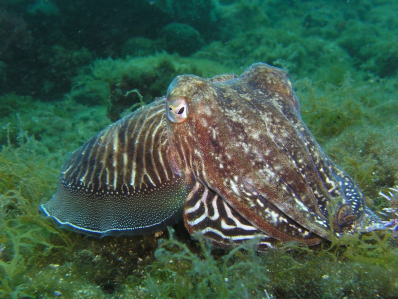Proofreading: cuttlefish
The Grammar Bit!
By now you should be an expert in the art of proofreading! Remember, proofreading is an important stage in the writing process. It involves spotting and correcting any mistakes that you may have made in your writing.
With your talk partner, choose one of the scintillating sentences opposite and proofread it using the CUPS checklist below.
C = Have capital letters been used correctly?
U = Do sentences sound right? Will your reader understand what you are trying to say?
P = Are sentences correctly punctuated? (There are many forms of extra punctuation you can use in Year 6: commas, dashes, brackets, colons and semicolons – especially in lists.)
S = Are words spelt correctly? (Give extra thought to those from the year 5/6 word list and to any technical vocabulary.)
Scintillating Sentences
1) Because they are died black with cuttlefish ink and are rounded cuttlefish eggs are sometimes called ‘sea grapes.’
2) In the uk common cuttlefish are mainly found of the western and southern coasts of england and it is a common site to see chalky cuttlebones littering beaches in these regons.
2) Even tho they are completely colour blind Cuttlefish are nicknamed the ‘chameleons of the sea’ due to there ability to camoflage themselves and change colour and texture to blend in with there ocean enviroment.

Did you know?
A cuttlefish has a mouth that is much like a parrot’s beak. However, it is hard to see because it lies buried at the base of the animal’s eight arms. The cuttlefish uses its beak to subdue prey and to defend itself against predators and rivals by biting.

 Sign in
Sign in

